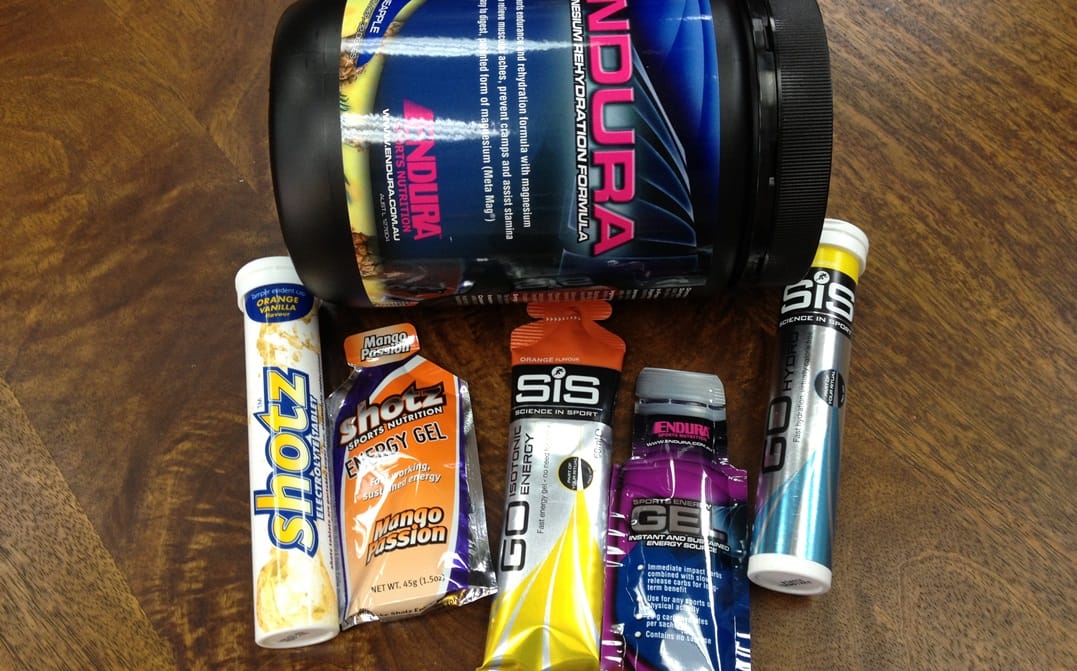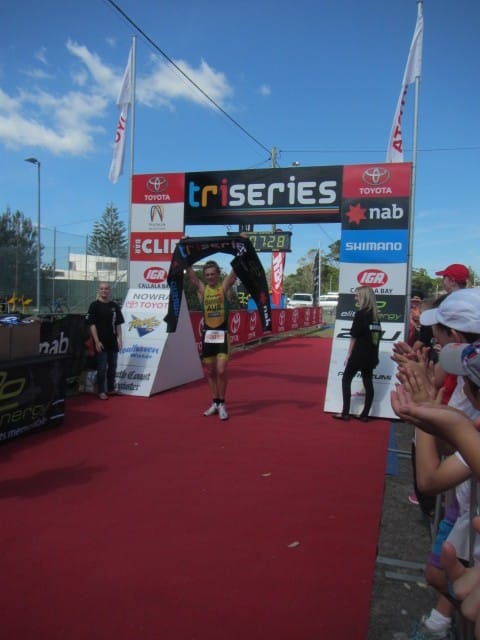With summer upon us race season is well underway in the triathlon community and the next physical test is around the corner in our nation’s capital. Canberra Ironman 70.3 is only two weeks away. A race date which some of you are eager and ready to test your physical limits in, while others are just hoping that their weekly Saturday morning social ride will get them to the finishing shoot. Whichever training regime you have adopted there is still time to gain the fastest split for the fourth hidden discipline to our sport, nutrition.
In every triathlon race, I believe the fourth discipline can make or break a race. For sprint and Olympic racers, your fourth discipline is transition, whilst 70.3 and full Ironman athlete’s nutrition can predict the splits. The days leading up to December 15 are when the race really begins! Making sure our body is properly nourished makes the swim leg through Lake Burley Griffin that little bit easier. This means that the week before the race setting a personal goal of eating a variety of whole raw foods that are providing your body with all the nutrients it needs is a great pre-race plan. Pay attention to your final training sessions leading into Sunday’s race. Make sure these sessions are followed by nutritionally rich foods to supply your body with the energy it needs for cells to rebuild (cellular reconstruction) I.e. primarily simple carbohydrates, very little fat/fiber (these both slow the rate at which carbohydrates enter the bloodstream) and a small amount of protein within the first 45 minutes post-exercise.

My favourite recovery drink

This drink has no fat, is plentiful with simple carbohydrates and a small portion of protein to aid in glycogen synthesis.
- 1 cup coconut water
- 1/2 scoop Tao powder
- 1/2 banana
- 1/2 cup blueberries
- 1 soaked date
- Crushed ice
- Combine all in a blender.
Sprinkle white chia seeds on top.
Once you have properly recovered and nourished your body in the lead-up week you need to plan your race day nutrition
Your body can store up to 90minutes worth of glycogen in the muscles when working at a moderate intensity. This means that in a half Ironman not only do we need to make sure that our muscles are full with available glycogen, but we also need to top up your glycogen stores. I am not a big fan of “carb loading”. Leading into a race we taper off training, therefore our bodies need less glycogen than usual to maintain fuelled, so if we continue to eat the same but decrease our training load your muscles will have abundant glycogen stores waiting to be used. Too many athletes approach carb loading as a pizza, pasta, rice and bread party in their stomach, the more the better.
However, as I mentioned before we can only store so much glycogen in our muscles, if we over consume we are just adding extra carbohydrates which are converted into fat since it’s not being used, resulting in extra body weight for us to cart around, an issue that I’m sure a few of you have been trying to fight off all season. On race day morning be sure to eat a breakfast a few hours before the race that consists of complex carbohydrates, fat and protein. For example, oats/buckwheat and/or quinoa porridge with bananas, pumpkin seeds, white chia seeds and coconut milk is a great option.
Our body’s first choice of fuel during exercise is simple carbohydrates (such as most fruits, dates, agave nectar, and honey). If the body is not provided with enough simple carbohydrates it will result to burning complex carbohydrates which require extra energy to be converted into simple carbohydrates. Too much protein should also be avoided since protein requires more fluid to be metabolised than that for carbohydrates or fats and is likely to cause muscle cramping. Make sure the food you eat on race day is easily digested. Food that is difficult to break down will require more energy to digest and call on more blood to the stomach and aid this process, reducing the amount of blood used to transport oxygen to the working muscles.
Let’s face it you’re going to need all the oxygen you can get to those muscles to grab 1 of the 25 world champ spots up for grabs. This is why I highly recommend consuming foods in liquid form and why gels have become most prominent in endurance sports today. There are many contradicting views on how often we should consume carbohydrates whilst exercise, however, there is no right or wrong answer. We all have different machines and so I think it is essential to test out how much food and fluid you can consume during exercise to provide you with enough energy to perform but, at the same time, not disrupt your digestive system. If in doubt try and consume simple carbohydrates around every 30 minutes. Ultimately we want to train our body to be able to race utilising fat as energy, however, this process takes time to train and cannot be achieved in two weeks. I will dedicate a future blog post to this topic.
This is why I highly recommend consuming foods in liquid form and why gels have become most prominent in endurance sports today. There are many contradicting views on how often we should consume carbohydrates whilst exercise, however, there is no right or wrong answer. We all have different machines and so I think it is essential to test out how much food and fluid you can consume during exercise to provide you with enough energy to perform but, at the same time, not disrupt your digestive system. If in doubt try and consume simple carbohydrates around every 30 minutes. Ultimately we want to train our body to be able to race utilising fat as energy, however, this process takes time to train and cannot be achieved in two weeks. I will dedicate a future blog post to this topic.

Hydration is also key. Being adequately fuelled and hydrated before and during exercise will decrease the amount of stress placed on the body and therefore allow the body to work more efficiently. However be careful not to go H2O crazy as over-hydrating can result in electrolytes being flushed from the body which can lead to hypernatremia. This can lead to muscle twitching and cramping. Whilst racing, however, you need to make sure you’re replenishing any fluid lost in sweat. An objective you should set is to never be thirsty. Coconut water is packed with electrolytes and can be used as a great natural sports drink as many commercialised sports drinks contain artificial colours and flavours and are loaded with refined sugar. The frequency and timing of fluid are parallel to food in that it is completely individual, however, a guide to fluid intake is to drink water with an electrolyte substitute roughly every 15 minutes.
I know I’m about to get some repulsed faces from the females but it is almost guaranteed that you will and should need to pee during the race, come on girls you are 70.3 iron women! The bike is the ideal place to let loose of those unwanted fluids so as to not begin the run on a “slushy” stomach. So, words of warning to you all, if you feel moisture hitting your face and it’s not raining, STOP DRAFTING!
The weather forecast for Canberra in mid-December ranges from 11 to mid-30 degrees Celsius. This means that at the swim start it’s likely to be a bit chilly yet become quite hot and humid nearing the run leg. Make sure you are not shivering on the water’s edge as your body is using excess energy to try and warm the body. Eating and digestion produces heat and so consuming your last carbohydrate supplement just before the swim start may be a beneficial idea. Once you’re racing you’ll forget about the coldish Canberra air and soon you will be sweating through your Tri suit.
It is on the bike and the run leg that it will be important to replenish extra fluid and electrolytes in such hot conditions. I’m going to plug coconut water again as it helps maintain smooth muscle contractions, replace electrolytes and energy levels especially in hot conditions. I have compared the predicted weather forecast of Canberra in mid-December to a chart produced by the AIS on sweat loss. Through cross-referencing the chart it is estimated that you will lose on average 1.2L/hour of fluid on the bike leg and 1.4L/ hour on the run.
This study, however, was for males so women your fluid loss will be slightly less. Also, you need to consider your rate of sweat in comparison. Remember though that race day is not the right time for your body to be making new friends with foods and liquids.
Main points
- Be adequately nourished and hydrated the days leading into the event
- During the race make sure you are consuming foods containing simple carbohydrates.
- Have foods that are easily digestible for your body I.e. liquid meals
- There is no key nutritional plan, everyone is different and requires various nutritional needs. Practice your nutrition strategies in training!
- Canberra is likely to be cool in the morning and quite hot in the middle of the day so stay warm, consume your last energy supplement just before the swim start and replenish the body with electrolytes, water and simple carbohydrates on the bike and run!
All in all, make sure you have fun out on the course, don’t stress if you lose a bottle because you mounted poorly and kicked it off there is always the security of the aid stations. Things are bound to go wrong nutritionally but that’s the nature of racing, we push on, we learn, we register for the next race on the trip home.








